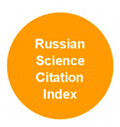Is life expectancy at birth really the best measure of mortality in a population?
Abstract
It is generally considered that the most adequate indicator of mortality in any population in a certain calendar period is life expectancy at birth (LE). Yet this indicator has serious drawbacks, and its use leads to a number of unjustified difficulties. The main limitation is that the method for calculating life expectancy is still not unified and most likely never can be. As a result, LE for different countries and periods may not be comparable. The data of the international Human Life Table Database makes it possible to demonstrate that in LE comparisons it is often impossible to use the first decimal digit.
Computation of LE requires the calculation of life tables for a hypothetical cohort corresponding to the calendar period under consideration. When mortality declines rapidly, as has been the case in most countries since the mid-20th century, life tables for a hypothetical cohort say little about the age patterns of birth cohort mortality, and instead form false impressions. Counting how many people in a hypothetical cohort survived or did not survive to a certain age has no relation to any real population.
The transition from age-specific mortality rates to life expectancy is described not by a formula but by a computational procedure. This creates serious difficulties when trying to assess the impact of mortality at certain ages from certain causes of death in certain regions and population groups.
All these drawbacks are not shared by the standardized death rate (SDR), the calculation of which becomes the only option as soon as the standard population is specified. Data of the Human Mortality Database allowed us to show that mortality level estimations based on SDR almost coincide with those based on LE.
SDR is a linear function of age-specific mortality rates; therefore, it is not difficult to calculate the effect of mortality in certain ages, regions or population groups and from different causes of death on SDR.
Non-professionals perceive LE on an intuitive level as the duration of a human life, which is rather a drawback of the indicator. The use of SDR requires more explanation. But in practical research and in professional publications, focusing on SDR will facilitate the work and protect against unwarranted emotions.
Downloads
References
Anderson R.N. (1999). Method for constructing complete nnual U.S. life tables. In Vital and health statistics, Series 2, Data evaluation and methods research, no. 129.
Andreev E.M., Darskiy L.E., Kharkova T.L. (1997). Demograficheskaya istoriya Rossii: 1927-1959 [Demographic History of Russia: 1927-1959]. Moscow: Informatika.
Andreyev E.M. (1982). Metod komponent v analize prodolzhitel'nosti zhizni [Component method in life expectancy analysis]. Vestnik statistiki, (9), 42–47.
Andreyev E.M. (2011). Ozhidayemaya prodolzhitel'nost' zhizni 70 let, ili déjà vu otechestvennoy demografii [Life expectancy of 70 years, or déjà vu of domestic demography]. Demoskope Weekly, 487- 488.
Chiang C.L. (1984). The Life Table and its Applications. Malabar: Florida.
Coale A., Demeny P. (1966). Regional Model Life Tables and Stable Populations. Princeton: Princeton University Press.
Eurostat (2013). Revision of the European Standard Population - Report of Eurostat's task force edition.
Gavrilov L.A., Gavrilova N.S. (1979). Issledovaniye kineticheskikh zakonomernostey smertnosti lyudey v istoricheskom aspekte [Life expectancy of 70 years, or déjà vu of domestic demography]. DAN SSSR, 245(4), 1017-1020.
Greville T. (1943). Some methods of constructing abridged life tables, Records of the. American Institute of Actuaries, 32, 29–43.
Institute for Demographic Studies (INED), Max Planck Institute for Demographic Research (2021). The Human Cause-of-Death Database (HCD). URL: https://www.causesofdeath.org/cgi-bin/main.php
Max Planck Institute for Demographic Research (2021). Human Life Table Database. Retrieved from https://www.lifetable.de/cgi-bin/data.php (data downloaded on 05.02.2021).
New Economic School (2021). The Russian Fertility and Mortality database. Retrieved from http://www.demogr.nes.ru/index.php/en/demogr_indicat/data (data downloaded on 05.02.2021).
Novosel'skiy S.A. (1916). Smertnost' i prodolzhitel'nost' zhizni v Rossii [Mortality and Life Expectancy in Russia]. Petrograd: Tipografiya Ministerstva Vnutrennikh Del.
Rosstat (2021a). Yestestvennoye dvizheniye naseleniya v razreze sub"yektov Rossiyskoy Federatsii po mesyatsam. 2020 god. [Vital statistics data on regiohs of the Russian Federation by months. 2020 year]. URL: https://rosstat.gov.ru/folder/12781 (data downloaded on 08.02.02.2021).
Rosstat (2021b). Otsenka chislennosti postoyannogo naseleniya na 1 yanvarya 2021 g. i v srednem za 2020 g. [Estimated resident population as of January 1, 2021 and on average for 2020]. URL: https://rosstat.gov.ru/folder/12781 (data downloaded on 19.03.2021).
Rosstat (2021c). Predvaritel'naya otsenka ozhidayemoy prodolzhitel'nosti zhizni pri rozhdenii po sub"yektam Rossiyskoy Federatsii za 2020 god [Preliminary estimate of life expectancy at birth for the subjects of the Russian Federation for 2020]. URL: https://rosstat.gov.ru/folder/12781 (data downloaded on 19.03.2021).
Shkolnikov V.M., Jdanov D.A., Andreev E. M., Vaupel J.W. (2014). Rapid increase in maximal country specific life expectancy across cohorts. Advances in Gerontology, 27(2), 229-235.
Shukaylo V.F. (1979). O printsipakh matem. otobrazheniya sushchnosti protsessov smertnosti [On the principles of mat. displaying the essence of mortality processes]. In Prodolzhitel'nost' zhizni: analiz i modelirovaniye (pp. 104-123). Moscow.
Smertnost’ i prodolzhitel’nost’ zhizni naseleniia SSSR 1926-1927 gg. [Mortality and life expectancy of the USSR 1926-1927] (1930). Tablitsy smertnosti. Moscow – Leningrad.
Strehler B. (1964). Vremya, kletki i stareniye [Time, cells, and aging]. Moscow.
Timonin S., Danilova I., Andreev E. M., Shkolnikov V. (2017). Recent mortality improvement in Russia: are regions following the same tempo? European Journal of Population, 33(5), 733-763.
TSSU SSSR (1962). Tablitsy smertnosti i sredney prodolzhitel'nosti zhizni naseleniya SSSR. 1958-59 [Life tables and life expectancy of the population of the USSR. 1958-59]. Moscow: Gosstatizdat.
United Nations (1982). Model Life Tables for Developing Countries (United Nations publication, Sales No. E.81.XIII.7).
University of California, Berkeley, and Max Planck Institute for Demographic Research (2021). The Human Mortality Database. U.K., United Kingdom Total Population. Retrieved from https://www.mortality.org/cgi-bin/hmd/country.php?cntr=GBR_NP&level=1 (data downloaded on 05.02.2021).
World Health Organization (2021). WHO Mortality Database. URL: https://www.who.int/data/data-collection-tools/who-mortality-database
























